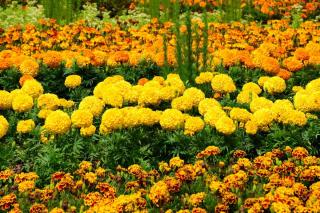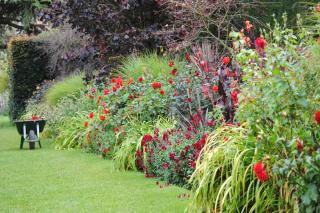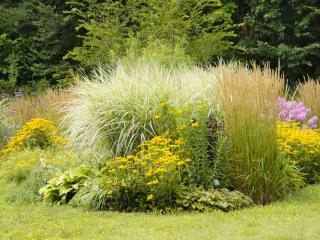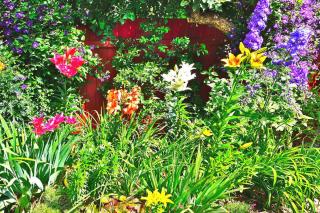

Starting a flower bed always requires a little bit of thinking and planning. There are a few basic rules to follow if you want your bed to look beautiful.
Best news: no need to be a landscaper to succeed! If you follow our advice, creating a flowerbed will be something you’ll quickly master!
 No need to be Monet or Van Gogh, all you want to do is visualize your project on paper.
No need to be Monet or Van Gogh, all you want to do is visualize your project on paper.
It’ll really help a lot when planning things out: space, volume, colors…
An hour spent sketching the plants out will save a day’s heavy work out in the sun, and you’ll feel more at peace knowing what you’re doing.
The first rule, and possibly the most important one to make a flower bed, is to select plants based on their future growing environment. They’ll thrive all the more for this. The criteria you should consider are the following:
 climate (harsh winter or mild one, dry summer or wet summer);
climate (harsh winter or mild one, dry summer or wet summer);Also: climate-adjusted plants
 When you glance at a garden, the first thing you notice are its colors: green lawn, tree leaves, different spots of colored flowers, mulch and walkways etc.
When you glance at a garden, the first thing you notice are its colors: green lawn, tree leaves, different spots of colored flowers, mulch and walkways etc.
Thanks to the colors of all these elements, you can imagine three types defining set-ups: monochromatic (or camaïeu, as the artistic term goes), harmony and contrast.
 The goal here is simple: choose a color for flowers or foliage and repeat it in as many hues as can be.
The goal here is simple: choose a color for flowers or foliage and repeat it in as many hues as can be.
For instance, if you select “red”, you can find plants that have colors ranging from scarlet to blood red to carmine to vermilion to imperial red…
The goal is completely different in this case, since harmony makes it possible to rely on different colors.
For example, if “red” is still the basis, you might complement that main hue with plants that are orange or violet. In case you prefer “blue”, then pair it with various shades of green, for instance.
This time, you have to find the perfect opposite of the color you chose:
To help you in choosing your colors, you can rely on the chromatic circle.
 Bring volume to your garden with a garden bed that features wonders at different heights: plants and blooms that are tall and short.
Bring volume to your garden with a garden bed that features wonders at different heights: plants and blooms that are tall and short.
However, just like in an extended family photo, stay logical: tall in the back, short in front!
This concept is also used when setting up a mixed border between your garden and the neighbor’s.
We tend to only think of the garden bed as a flower bed. But flowers only last a short while! They aren’t eternal, just like us – though we do get more seasons than they do.
When flowers have faded away, you must rely on something else to still make your garden bed look great. Vary the shape and bearing of your plants and shrubs: bushy, erect, creeping, etc. This will bring movement and vitality to your flower bed.
Who doesn’t think a garden in winter looks drab and sad? Think again! When making the most of what nature provides, it’s actually quite easy to have a very beautiful garden even in Winter:
 grasses that bear beige-colored seed pods;
grasses that bear beige-colored seed pods;For the remaining seasons, simply imagine how your plants will evolve as the year rolls on:
 Fuzzy leaves of the Stachys, coarse leaves of leatherleaf viburnum, smooth, shiny or mat, plants come up with more imagination than we might ever, all for the pleasure of combining them into stunning shrub and flower beds that, for sure, won’t look boring.
Fuzzy leaves of the Stachys, coarse leaves of leatherleaf viburnum, smooth, shiny or mat, plants come up with more imagination than we might ever, all for the pleasure of combining them into stunning shrub and flower beds that, for sure, won’t look boring.
Walk around the neighborhood and chat with owners of beautiful flower beds. They’ll be more than happy to share what they’re proud of and what they would have done better!